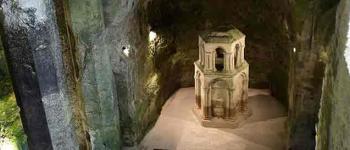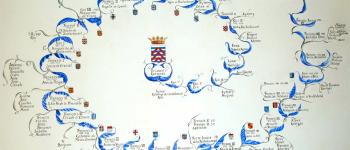
The term "Cognac" is known all over the world, but the town and the vineyards are really worth a visit.
Cognac is an eau-de-vie de vin, produced in France in a delimited region centred around Cognac, encompassing a large part of the Charente, almost all of the Charente-Maritime, and a few enclaves in the Dordogne and Deux-Sèvres.
Only those eaux-de-vie that come from grapes harvested and vinified within the Cognac appellation territory can claim the Appellation d'Origine Contrôlée "Cognac" or "Eau-de-vie de Cognac" or "Eau-de-vie des Charentes".
Distillation is carried out according to the principle of discontinuous distillation, known as double distillation. This method consists of a succession of two stages known as "heating".
In the collective imagination, the evocation of Cognac inevitably refers to the famous eau-de-vie.
It is true that the town owes its universal reputation to Cognac and its sudden change of dimension in the 19th century.
A bit of history...
However, cognac is not the only key to understanding the city, which has a rich history and heritage that goes beyond spirits.
Although the Cognac area has many vestiges of prehistoric times - the dolmen of Séchebec, 4th millennium BC and Gallo-Roman, the Upper Sarrazine, 2nd and 3rd century AD - the real history of the town began in the Middle Ages with the salt trade.
To bring salt from the coast to the people of the "interior", men went up the Charente River. From the middle of the 10th century, they settled on the very site of Cognac and created the salt port which was to prosper for 5 centuries.
The Hundred Years' War was a disastrous episode for the town, which passed successively into the hands of the English and the French.
At the end of the 15th and 16th centuries, Cognac experienced a prosperous period under the sovereignty of Jean and Charles d'Angoulême, the administration of Louise de Savoie and during the numerous stays of her son, François I, born in Cognac on 12 September 1494.
The town and its monuments are being rebuilt and embellished while the castle is the seat of a brilliant cultural life where ideas of the Renaissance flourish.
The violent clashes of the Wars of Religion mark the second half of the 16th century.
The second major stage in the construction of the city is the 19th century when, under the impetus of the cognac trade, the city changes dimension.
Despite this urban explosion, natural areas were preserved and green spaces were created such as the Bois du Portail, the François 1er park or the public garden of the Town Hall.
It wasn't until the 1960s that the city expanded again with the construction of new districts.
A remarkable heritage
By granting his "good city" many privileges, Francis I launched the start of a flourishing salt trade in Cognac, by the river Charente. Since that time, and then the one that saw the development of the brandy trade, the quays of the Charente in Cognac have been a nerve centre of the town.
The two curtain towers, known as the Tours Saint Jacques or Porte des Ponts, are the most visible remains of what was the medieval fortified enclosure. Opposite these towers, a medieval bridge, demolished in 1855, gave access to the other bank of the Charente.
The castle of Cognac cannot be forgotten. Destroyed in the 12th century then rebuilt in the 15th, the Château des Valois owes its fame to the fact that it was home to a princely and royal family. King François I was born there in 1494. Inside, you should see the Helmet Room, the Tower of Count Jean and the superb vaulted room known as the Salle des Etats. The castle now belongs to the House of Cognac Otard.
You should also visit the church of Saint-Léger, built around 1130, in the shape of a Latin cross with domes.
The Maison de la Lieutenance, located at the beginning of rue Grande, the main axis of the city from the Middle Ages until the middle of the 19th century, is also worth seeing. Of medieval origin, the building was rebuilt in the 17th century on the initiative of Pierre de Lacombe, lieutenant general of the city.
The carved wooden pieces, visible on the façade, probably date back to the 15th century and were reused when the wooden sections were reassembled. The door flanked by pilasters as well as the interior fittings, fireplaces and paintings date from the 17th century.
Despite these modifications, the Lieutenancy House still has the characteristics of a late medieval house with its ashlar ground floor and a timber-framed and corbelled elevation.
One could not visit Cognac without taking a look at the public garden, the Town Hall and the Cognac Art and History Museum.
This garden is the result of the purchase of two properties, the Hôtel Otard de la Grange and the Hôtel Dupuy d'Angeac by the town of Cognac, to make the Town Hall and the Municipal Museum. The garden of Cognac, classified site in 1943, has elements characteristic of the English garden, pagoda, orangery, caves, sinuous lines.
Cognac Tourist Office
16, Rue du 14 Juillet,
16100 Cognac
Tel: 05 45 82 10 71
https://www.tourism-cognac.com/
Translated with www.DeepL.com/Translator
(free version)





